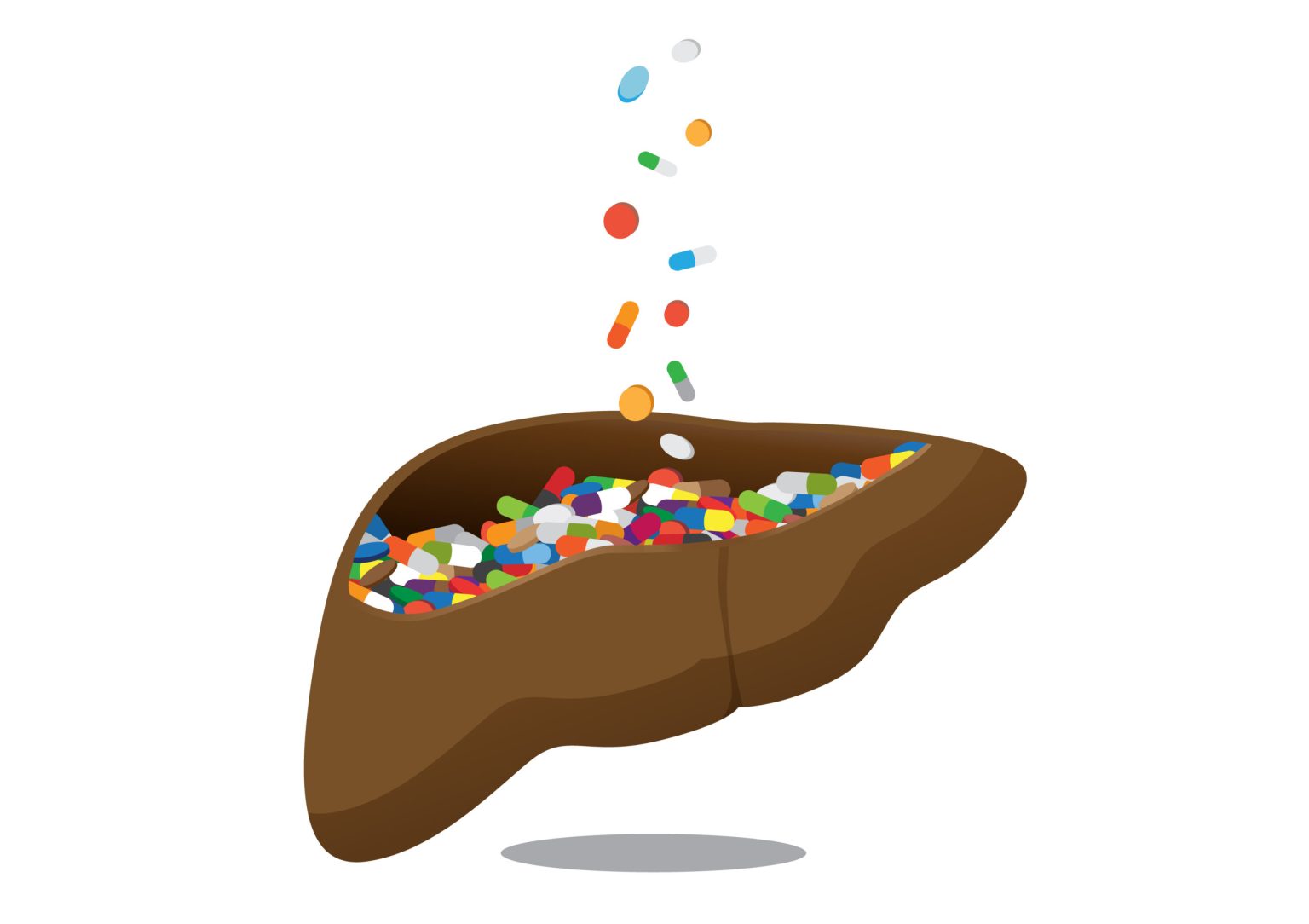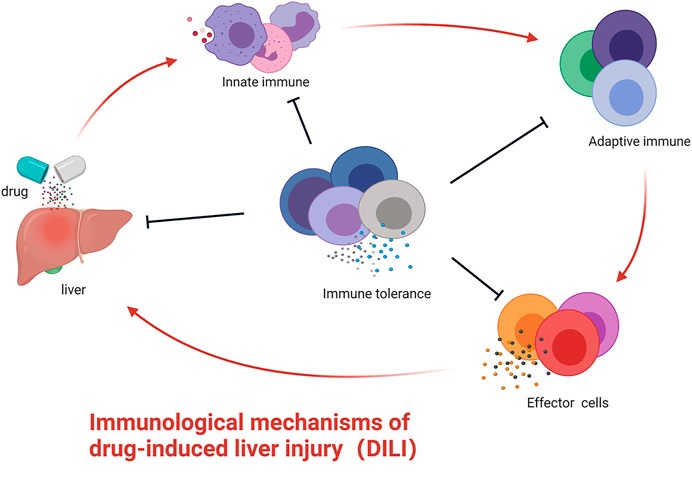Drug Induced Liver Injury
What is Drug-Induced Liver Injury (DILI) ?
Drug-induced liver injury (DILI) refers to liver damage caused by prescription of over-the-counter medications or supplements (herbal or other types). DILI may also be known by other names, including drug-induced hepatotoxicity, toxic hepatitis or drug-induced hepatitis.
Increase in liver enzymes in blood tests may be the only sign of mild cases of DILI. With more severe cases, people may notice symptoms such as jaundice (yellowing of the skin), itching or easy bruising. In some severe cases, loss of liver function can be life threatening.
This material gives a general description of drug-induced liver injury (DILI). If you have questions about this information or your health, talk with your health care provider.
What is a Liver?
To better understand drug-induced liver injury (DILI), it may help to know how a liver normally works.
The liver is in the right upper part of your abdomen, under your ribs. Weighing about 3 pounds, the liver is the largest solid organ in the body (Figure 1). You can’t live without your liver.


The liver works like a factory; it makes substances you need to live, and it filters harmful materials from the blood. Proper liver function is needed to:
- Make bile, which helps your body digest food and absorb nutrients.
- Store sugar (glucose), which gives you energy.
- Help control your metabolism.
- Make proteins, which help build muscles.
- Clot blood.
- Filter your blood.
- Break down toxic substances.
- Process medications.
Liver injury is the number one reason that medications are not approved by the FDA (Food & Drug Administration) or are removed from the market.
What are the symptoms of Drug induced liver injury ?
You may not have any symptoms with mild forms of drug-induced liver injury (DILI); it may be detected only with blood tests. Some early symptoms of DILI may not point specifically to a liver problem. For example, you may have nausea, fatigue and loss of appetite, which can be symptoms of other problems.
In more severe forms of DILI, symptoms such as jaundice and severe itching may point to a liver problem. Before DILI can be diagnosed, other liver problems must be ruled out.
How is Drug Induced Liver Injury diagnosed ?
In order to diagnose drug-induced liver injury (DILI), your health care provider will start with a physical exam and ask you questions about your medical history, especially about medications you take. Be sure to tell your health care provider about all medications that you take, both prescription and over-the-counter medications. Also, tell about any herbal supplements that you take.
Several tests may be done to diagnose DILI. Because the general symptoms may point to various liver problems, you may have several tests. If blood tests show liver injury, imaging tests may be done to rule out other causes of liver damage.
Liver function blood tests
Some blood tests that may be done include:
- Albumin measures a major protein produced in the liver. A low albumin level shows a poor liver function.
- High levels of bilirubin also show a problem with liver function. When bilirubin levels are high, the skin and whites of the eyes may appear yellow or "jaundiced".
- Prothrombin time measures the time it takes for blood to clot. When there is liverdamage, the liver makes fewer of the proteins used to clot blood, and the blood takes longer to clot.
- Liver enzymes include ALT (alanine aminotransferase), AST (aspartateaminotransferase) and alkaline phosphatase. These enzymes are released from liver cells with liver injury or inflammation and are higher when there is liver damage.
Imaging techniques
Ultrasound
Ultrasound is an imaging technique that sends sound waves you cannot hear into the body. The echoes return from the surfaces of the organs and make images that are recorded. An ultrasound is a painless way to look at the size, shape, texture and blood supply of the liver.
CT scans
The CT scan is a type of X-ray that takes cross -sectional pictures of the body and its organs. A CT scan is sometimes used to get a different view of the liver from that seen on ultrasound exams. Sometimes the CT scan can “see” something that ultrasound does not, or vice versa.
Liver biopsy
A liver biopsy is a short outpatient procedure in which a small piece of tissue is taken from the liver using a special needle. A liver biopsy may help to show the amount of liver damage. A biopsy also may help diagnose the liver problem if blood and imaging tests don’t provide answers.
If you have questions about the liver biopsy, talk with your health care provider.
What are the treatment options for Drug Induced Liver Injury ?
When drug-induced liver injury (DILI) is diagnosed, you will be asked to stop the medication that seems to be causing the liver problem.
Treatment for DILI includes monitoring and medications. Monitoring means that you may have frequent blood tests to make sure your liver tests return to normal after stopping the medication that is causing your liver problem.
Medications may be used to treat any symptoms caused by your liver problem. For example, itching can be treated until it goes away.
Rarely, in cases of severe liver injury, liver transplant may be an option.
What is a follow-up care ?
After stopping the medication, you may have blood tests every 1-2 weeks until your liver tests return to normal.
If your liver tests do not return to normal in 6 months, your DILI is considered to be chronic. Then you will have blood tests yearly to make sure your liver problem is stable. If your liver problem gets worse, your health care provider will discuss treatment options with you.
Once a drug-induced liver injury (DILI) occurs, are there more chances of getting it again?
If you are exposed to the medicine that caused DILI or medicines in the same class, DILI may recur. Once you have had DILI, avoid indefinitely the medication that caused it.
Does DILI run in families?
There is no evidence that DILI runs in families.
Are some medications more likely than others to cause problems?
DILI can occur with any type of medication although medications that are most commonly associated with DILI are anti tubercular drugs and antibiotics. Some prescription medications are known to have potential to cause liver problems. People taking these medications may need to have regular blood tests to monitor liver function.
Most people with DILI had an unpredictable reaction to a medication.
What happens if the liver tests don’t go back to normal?
If your liver injury persists, you may need medical treatment. If this happens, talk with your health care provider about treatment options.
Remember
There is no way to prevent or predict drug-induced liver injury (DILI). Always tell your health care provider about all medications and supplements you are taking and pay attention to your body. If you don’t feel well, see your health care provider.
The outcome is usually better when DILI is diagnosed early.
